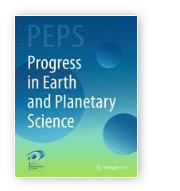Impact of the combination and replacement of SLR-based low-degree gravity field coefficients in GRACE solutions
Filip Gałdyn; Krzysztof Sośnica
Progress in Earth and Planetary Science
Ministerial score = 140.0
Journal Impact Factor (2023) = 3.9 (Q2)
 GRACE and GRACE Follow-On (FO) missions provide time-variable gravity field models of unprecedented quality that allow for the hydrological, oceanic, and ice mass change studies on a global scale. However, the very low-degree coefficients derived from GRACE and GRACE-FO are of inferior quality due to thermal effects acting on satellites and malfunctioning of the onboard accelerometers. Therefore, C20 and C30 coefficients describing the Earth’s oblateness and the pear shape of the Earth, respectively, are being replaced by values derived from satellite laser ranging (SLR) in the standard GRACE solutions. This study assesses the impact of the replacement of low-degree gravity field coefficients in GRACE/GRACE-FO solutions by SLR data on the trend and seasonal signals of ice mass changes in Greenland and Antarctica. We found that the replacement of the low-degree gravity field coefficients changes the estimates of trends by 4, 8, and 22 Gt/year in Greenland, West, and East Antarctica, respectively, depending on the source of SLR coefficients and period for which the coefficients are replaced. In SLR and GRACE solutions, all coefficients of the same order and the same parity of degrees are strongly correlated. Therefore, replacing only two selected coefficients may lead to a biased solution. Thus, we propose to combine GRACE with SLR solutions up to a degree and order 10 × 10 to properly consider the sensitivity of each of the techniques to gravity field coefficients, instead of replacing two coefficients from SLR in GRACE solutions. The combined solution reduces the residual trend of post-glacial rebound from 1.2 to 0.9 Gt/year and from − 57.8 to − 57.0 Gt/year in Scandinavia and South Canada, respectively, when compared to GRACE/GRACE-FO solutions with the replacement of coefficients. The SLR-GRACE combination reduces the noise in the GRACE/GRACE-FO solutions by 8%, from 38 to 35 Gt, in the Fennoscandia region. In the periods when GRACE is at the end of its mission and observations are disrupted, the weights adjust the contribution from SLR and GRACE based on relative ratio of variances from each techniques. Thus, the combined solutions are more consistent with independent geophysical models of glacial isostatic adjustment, and the combinations are affected by smaller noise than the standard GRACE solutions and properly account for different sensitivities of SLR and GRACE techniques to low-degree time-variable gravity field coefficients.
GRACE and GRACE Follow-On (FO) missions provide time-variable gravity field models of unprecedented quality that allow for the hydrological, oceanic, and ice mass change studies on a global scale. However, the very low-degree coefficients derived from GRACE and GRACE-FO are of inferior quality due to thermal effects acting on satellites and malfunctioning of the onboard accelerometers. Therefore, C20 and C30 coefficients describing the Earth’s oblateness and the pear shape of the Earth, respectively, are being replaced by values derived from satellite laser ranging (SLR) in the standard GRACE solutions. This study assesses the impact of the replacement of low-degree gravity field coefficients in GRACE/GRACE-FO solutions by SLR data on the trend and seasonal signals of ice mass changes in Greenland and Antarctica. We found that the replacement of the low-degree gravity field coefficients changes the estimates of trends by 4, 8, and 22 Gt/year in Greenland, West, and East Antarctica, respectively, depending on the source of SLR coefficients and period for which the coefficients are replaced. In SLR and GRACE solutions, all coefficients of the same order and the same parity of degrees are strongly correlated. Therefore, replacing only two selected coefficients may lead to a biased solution. Thus, we propose to combine GRACE with SLR solutions up to a degree and order 10 × 10 to properly consider the sensitivity of each of the techniques to gravity field coefficients, instead of replacing two coefficients from SLR in GRACE solutions. The combined solution reduces the residual trend of post-glacial rebound from 1.2 to 0.9 Gt/year and from − 57.8 to − 57.0 Gt/year in Scandinavia and South Canada, respectively, when compared to GRACE/GRACE-FO solutions with the replacement of coefficients. The SLR-GRACE combination reduces the noise in the GRACE/GRACE-FO solutions by 8%, from 38 to 35 Gt, in the Fennoscandia region. In the periods when GRACE is at the end of its mission and observations are disrupted, the weights adjust the contribution from SLR and GRACE based on relative ratio of variances from each techniques. Thus, the combined solutions are more consistent with independent geophysical models of glacial isostatic adjustment, and the combinations are affected by smaller noise than the standard GRACE solutions and properly account for different sensitivities of SLR and GRACE techniques to low-degree time-variable gravity field coefficients.
DOI:10.1186/s40645-024-00608-z









